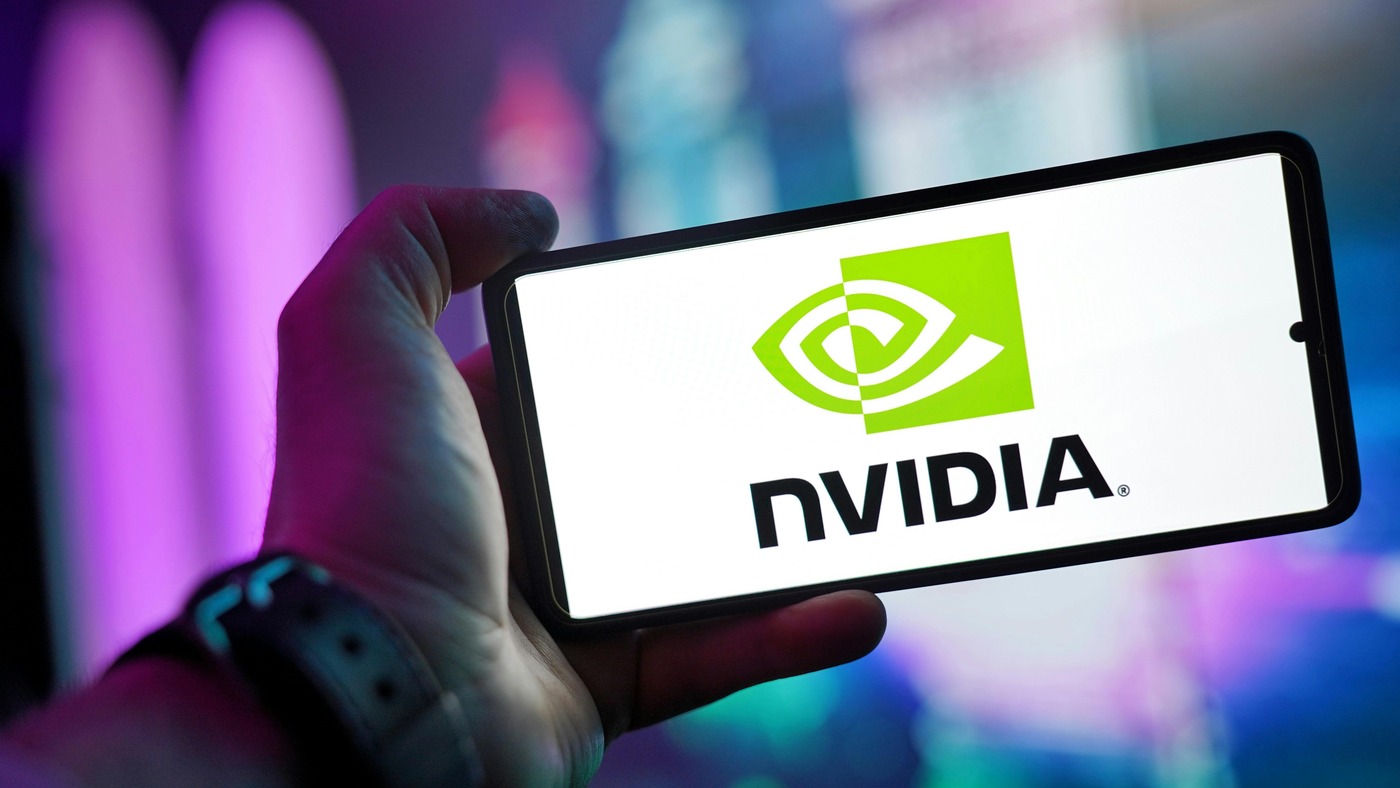Business
Nvidia Hits $5 Trillion Market Value, Leaving Rivals Behind

Nvidia has achieved a historic milestone, becoming the first company to reach a valuation of $5 trillion. This remarkable ascent marks a significant transformation from its origins as a graphics card manufacturer to a pivotal player in the global artificial intelligence (AI) sector. The surge in Nvidia’s market value underscores its central role in a technological evolution that now powers everything from data centers to national supercomputers.
Nvidia’s Unprecedented Growth
Nvidia’s growth trajectory over recent years has been exceptional. Just three months prior to this record, the company surpassed a $4 trillion valuation, driven by substantial orders for AI chips and a commitment to develop seven advanced supercomputers for the U.S. government. As a leader in high-performance chips, Nvidia has become indispensable to the AI industry, with its processors forming the core of nearly every major AI system currently being trained.
In addition to hardware, Nvidia has cultivated a comprehensive ecosystem that includes software frameworks and developer tools optimized for its technology. This multifaceted approach positions Nvidia not just as a chip supplier but as an integral component of the AI economy. Analysts attribute Nvidia’s success to its rapid innovation cycle, consistently releasing new generations of powerful chips that enhance data processing capabilities and energy efficiency. Investors view Nvidia as the premier player in AI hardware, shaping the future of computing.
The Competitive Landscape
Nvidia’s dominance in the AI market has created significant challenges for its competitors, including Advanced Micro Devices and Intel. According to a recent report, Nvidia’s graphics processing units (GPUs) account for the majority of chips utilized in AI training, leaving rival companies with minimal market share. A crucial element of Nvidia’s advantage lies in its established software ecosystem. Developers have invested years in creating tools and applications around Nvidia’s CUDA platform, making it a considerable challenge to switch to alternative providers. This network effect further solidifies Nvidia’s market position.
While major companies like Google and Amazon are developing their own AI chips, they still find themselves overshadowed by Nvidia’s comprehensive offerings. Nvidia remains the sole company successfully catering to both cloud giants and enterprise clients on a global scale, securing partnerships that may prove difficult for competitors to disrupt.
Despite the excitement surrounding Nvidia’s record valuation, analysts caution that potential risks loom on the horizon. The company’s stock price currently reflects high expectations for continued growth, and any slowdown in demand or delays in innovation could place that valuation under pressure. Furthermore, geopolitical factors such as export restrictions from the United States aimed at limiting advanced chip sales to China could impact Nvidia’s ability to serve one of its largest markets.
Nvidia has been proactive in developing modified chips to comply with these regulations, but the uncertainty surrounding global trade policies remains a concern. As one analyst noted, “Nvidia doesn’t need Trump’s backing the way Intel might. What Nvidia is doing is positioning itself close to the White House for deals that could be costly—like investing in Intel or building chips in Arizona. These are the costs of doing business with Washington. But beyond that, Nvidia doesn’t need Trump to generate revenue. It just needs him not to stand in the way.”
Market analysts have drawn comparisons between the current enthusiasm for AI and previous technology bubbles, emphasizing that the current situation differs significantly. One analyst remarked, “We also have an AI-driven capital expenditure boom—specifically in the chip sector and the hardware and cloud infrastructure sectors. So, I think you’ve got a structural growth narrative that extends beyond just a cyclical rebound. To some extent, the AI bubble that’s been discussed isn’t really a bubble because it’s backed by fundamentals and, frankly, by earnings growth.”
While Nvidia’s fundamentals appear robust, a cautious approach may be warranted. The company’s future success hinges on maintaining its technological leadership and ensuring a stable global supply chain in an increasingly competitive landscape. As the AI sector continues to evolve, Nvidia’s ability to navigate these challenges will be crucial in sustaining its remarkable market position.
-

 Health2 months ago
Health2 months agoNeurologist Warns Excessive Use of Supplements Can Harm Brain
-

 Health2 months ago
Health2 months agoFiona Phillips’ Husband Shares Heartfelt Update on Her Alzheimer’s Journey
-

 Science2 weeks ago
Science2 weeks agoBrian Cox Addresses Claims of Alien Probe in 3I/ATLAS Discovery
-

 Science1 week ago
Science1 week agoNASA Investigates Unusual Comet 3I/ATLAS; New Findings Emerge
-

 Science6 days ago
Science6 days agoScientists Examine 3I/ATLAS: Alien Artifact or Cosmic Oddity?
-

 Entertainment4 months ago
Entertainment4 months agoKerry Katona Discusses Future Baby Plans and Brian McFadden’s Wedding
-

 Science4 days ago
Science4 days agoNASA Investigates Speedy Object 3I/ATLAS, Sparking Speculation
-

 World2 months ago
World2 months agoCole Palmer’s Cryptic Message to Kobbie Mainoo Following Loan Talks
-

 Science4 days ago
Science4 days agoNASA Scientists Explore Origins of 3I/ATLAS, a Fast-Moving Visitor
-

 Entertainment3 months ago
Entertainment3 months agoEmmerdale Faces Tension as Dylan and April’s Lives Hang in the Balance
-

 Entertainment4 months ago
Entertainment4 months agoLove Island Star Toni Laite’s Mother Expresses Disappointment Over Coupling Decision
-

 Entertainment2 months ago
Entertainment2 months agoMajor Cast Changes at Coronation Street: Exits and Returns in 2025









